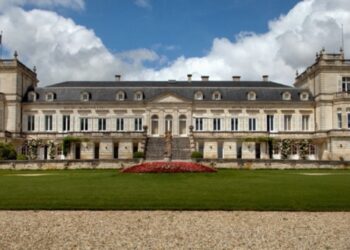I couldn’t tell you what road we were on in Sonoma County careening around hairpin curves as the sun dangerously blinded us. But, I can tell you it started a fight. We’d set off early in the day from Mendocino, intent on arriving in Sonoma County to explore the Dry Creek Valley for the grand finale long afternoon of a three-day wine weekend. We were lusting for the anticipated sips of chewy Zinfandel to come, literally holding visions of the robust vintages in our mouths, imagining that ever hedonistic melange of dark fruit — blueberries, plums, cherries — and pepper-laced anise propelling us to the wineries on our list. Until we got cocky — okay, maybe curious — and veered from the coastal road to take a “shortcut” through a canyon.
Dry Creek Valley, a storied AVA, nestles north of the Russian River Valley, just west of Alexander Valley sitting just northwest of Healdsburg — where we’d eventually spend the night. But we had miles to go before we’d sleep — or sip — as it turned out. Not exactly lost, we’d steered our car into an apocalyptic movie scene, the sort where there’s no service, every building looks moldering and deserted and the rutted, rugged road was not simply unpaved but edged with precarious downslopes. We blamed each other, snipping and snapping, as we metaphorically died of wine thirst. Sonoma, a huge county, can deceive greedy guzzlers who think a short path through an unknown canyon might save time. I will say that once we accepted we’d drive no faster than 20 miles an hour, arriving to our first winery reservation considerably late with no way to call, we simply enjoyed the view, fused with the landscape, came to understand why all these early winemakers, many of them from Italy (like some of my wine-country relatives) chose Sonoma to plant their vines. The breathtaking terrain glowed in golden light.

With more than 140 years of grape-growing and wine-making history, Sonoma’s hidden gem Dry Creek Valley, in northern California, encompasses some 9,000 acres. Packed with one of the densest varietals in the world, the region brandishes a jaw-dropping collection of more than 60 wineries in a leafy pocket measuring just 16×2 miles. From the groundbreaking legacy families who hewed the valley’s first viticultural contours to the new winemaking mavens, the wineries and wine crafters in Dry Creek Valley stand alone in their innovation, dedication to tradition, stories, and connection to the earth — Dry Creek’s earth, in particular. Once you actually reach Dry Creek Valley (don’t take that random road), you’ll be able to scoot handily from one winery to the next. Your biggest problem may be where to start and when to end. Rich enough for a dedicated wine trip itself, Dry Creek is best known for its Zinfandels, but you’ll savor so much more.
Ready to start? Don’t miss these seminal oenophile favorites.
Pedroncelli Winery

Family-owned Pedroncelli Winery sets the standard that defines the ethos of Dry Creek Valley: perseverance and creativity. A guiding light, the winery was founded in an unfortunate year, 1927, right before Prohibition. Nonplussed, the family endured the era by selling grapes to home winemakers — those charged with making wine for sacramental or medicinal purposes. Nearly a century-old, Pedroncelli Winery, with its bocce ball court and snazzy tasting room, makes monumental wines, specializing in heritage varietals such as Zinfandel and Petite Sirah.
Dry Creek Vineyards
On 185 acres of 100% certified sustainable estate vineyards, this family-owned pioneering winery has five decades of experience. Renowned for its terroir-driven Zinfandel and Sauvignon Blanc wines, Dry Creek’s wines have consistently received ratings in the 90s. Join the team for a tour and tasting, wine flight, and picnic lunch or seated tasting.
Dutcher Crossing Winery

Winemaker Nick Briggs manifests his attention to detail in the cellar and his overall vineyard visions in Dutcher Crossing’s abundance of single vineyard-designated wines. Showcasing lesser known grapes, such as Carignan and Grenache (in an exquisite Rosé), the winery offers a traditional wine tasting experience, spiked with casual fun: think lawn games.
Capo Creek Winery
Chef Winemaker Mary Roy sets the gastronomic tone at Capo Creek Winery, which follows tenets of minimal intervention and natural winemaking. Take part in a unique tasting adventure that celebrates the myriad elements and pristine nature of the fruit and the characteristics of the land — all paired with culinary creations by the chef. Exemplifying artistry in winemaking, Capo Creek is the gastronomic oenophile’s dreamscape.
Nalle Winery
What started as the Henderlong family sheep farm in the 1890s became the soulful Nalle Winery, a haven of old vine Zinfandel off Dry Creek Road. Handcrafted in their “living roof cellar,” the above-ground cave serves as both a place for winemaking and a temperature-controlled storage facility.
Lambert Bridge Winery

This super luxurious winery, tucked amid rolling vineyards and tree-mottled hills embodies the exclusivity of the Dry Creek Valley with stylish digs and limited-production wines. Utilizing premier equipment, such as a Le Trieur berry-by-berry sorter, small-lot fermenters, and pedigree French oak barrels, it provides personalized experiences for guests from picnics to barrel room to cellar tastings.
Mill Creek Winery
A bastion of tradition and dedication to Dry Creek Valley, Mill Creek Winery was launched in the early 1970s. Its founders, the Kreck family, recognized the region’s gifts, noting its rich soils and Mediterranean climate — ideal for grape growing. Eco-conscious, they use a variety of sustainable methods including dry farming techniques and organic vineyard management. Have them pour you some heritage small lot Zinfandel and Cabernet Sauvignon varietals.
When To Go
Anytime. Consider the annual Passport to Dry Creek Valley event held each spring, which provides a rare opportunity to taste myriad wines and meet more than 30 multigenerational family-owned wineries without reservations. Guests can join private vineyard tours, barrel tastings, and savor sips of limited-production library wines.
Featured image courtesy of Trent Erwin via Unsplash







